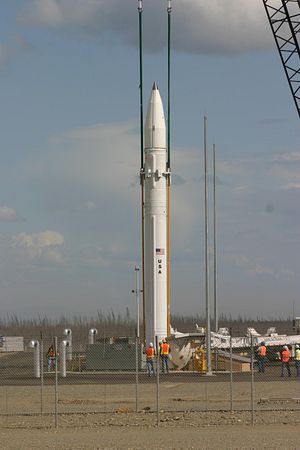Earlier this year, as president-elect, Trump took to Twitter to note that a North Korean intercontinental ballistic missile capability “won’t happen.” Six months later, with the first flight-test of the Hwasong-14 out of Panghyon Air Base in North Korea, North Korea demonstrated that capability. Meanwhile, various parts of the U.S. intelligence community assess that North Korea’s ICBM technology is likely sufficient to put it in a position to threaten the U.S. homeland reliably.
On Sunday, Mike Pompeo, director of the U.S. Central Intelligence Agency, appeared on CBS News’ Face the Nation for an interview on North Korea. Pompeo, when asked if the administration had put red lines in place, noted that “this administration has done a fine job of not drawing red lines that we’re not prepared to enforce.”
Later, however, Pompeo went on to illustrate an updated version of Trump’s original Twitter red line:
[Trump] has made very clear that the United States finds it unacceptable for a rogue leader like Kim Jong-un to have the capacity, a ballistic missile with a warhead that is integrated and fully deliverable to the United States and hold America and the world at risk. He finds that unacceptable, and he is simply not going to permit it to happen. (Emphasis added.)
Pompeo, presumably informed of his own agency’s latest assessment of North Korea’s ICBM reentry vehicles, modifies the original red line to now include a caveat that Pyongyang’s ICBMs be “fully” deliverable. It’s unclear what this would mean. North Korea has yet to declare its ICBMs operational and will likely conduct future testing.
What’s most interesting about Pompeo’s interview on Sunday, however, is a nod to a possible way out for the Trump administration on enforcement for its red line without initiating any sort of military action against North Korea whatsoever.
The red line enforcement, however, has to do with theatrical spending on ballistic missile defense and likely exaggerating the capability of the Ground-Based Midcourse Defense (GMD) system — the sole U.S. missile defense system with proven capability against ICBM-range systems. Pompeo continues at the end of the interview:
We cannot have Kim Jong-un in possession of the capacity to hold America at risk from an ICBM that is nuclear armed. That’s the mission set the president has given his national security team. Add to that ballistic missile defense, and that is the mission that the president has demanded that his team deliver to him.
The words “hold America at risk” are key here. The earlier red line has presumably shifted from preventing Kim Jong-un from acquiring the capability of an ICBM, which he has already done, to preventing him from putting the U.S. homeland at risk.
A war focusing on disarming first strike against Kim Jong-un’s existing ICBMs and fissile material infrastructure would be one way of ensuring this. Another would be to simply throw more money at GMD and claim that the system is a sufficient defensive umrbella against incoming ICBMs.
Given GMD’s track record and expense – the United States has to date spent more than $40 billion on the program – this claim would defy reality and potential burn up billions of dollars in the process, but it would be vastly preferable and cheaper than initiating a devastating war against North Korea.

































